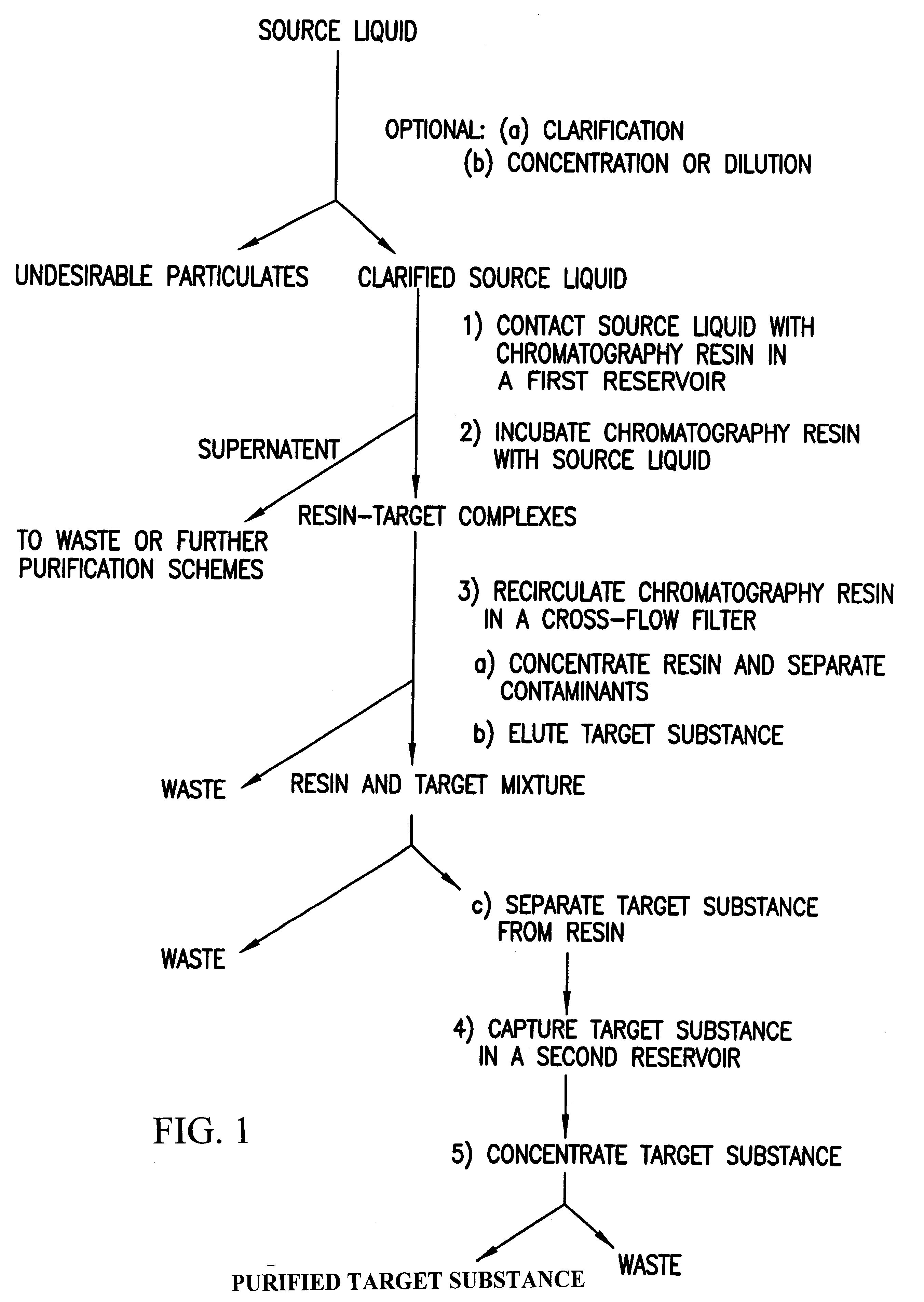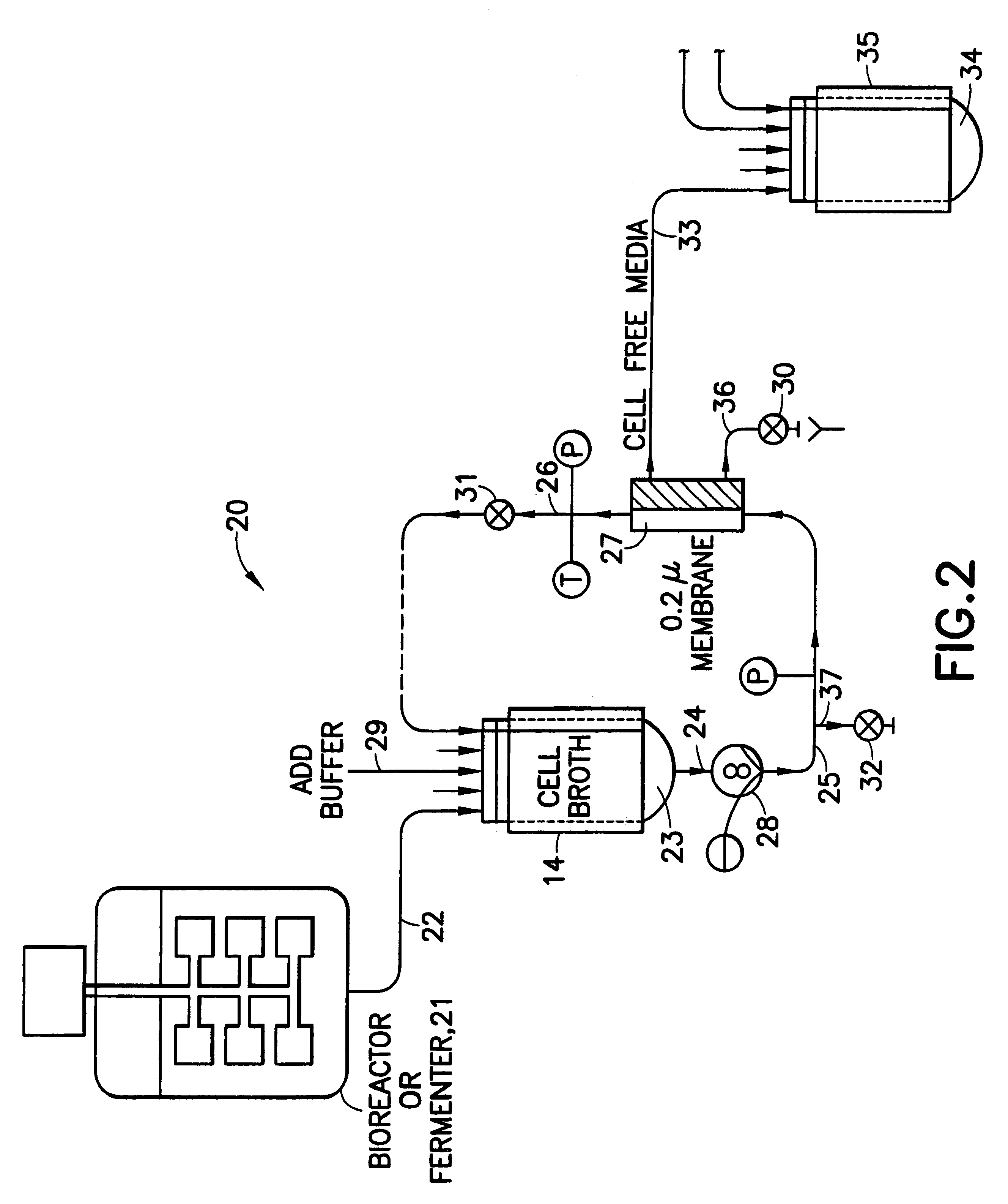Purification of biological substances
a biological substance and purification technology, applied in the field of biological substance purification, can solve the problems of chromatography and filtration, high cost of centrifugation, relatively slow, and difficult cleaning of equipment prior to reuse, and achieve the effect of cleaning fixed bed chromatography and other problems
- Summary
- Abstract
- Description
- Claims
- Application Information
AI Technical Summary
Benefits of technology
Problems solved by technology
Method used
Image
Examples
example 1
Purification of IgG from Raw Human Plasma
Using the apparatus shown schematically in FIG. 5, IgG was purified from raw human plasma by the method of the invention.
FIG. 7 shows an SDS polyacrylamide gel electrophoresis (SDS-PAGE) performed to evaluate the effectiveness of such purification. Lane 701 is a calibration sample containing several peptides of known molecular weight. Lanes 702 and 703 are 20 .mu.L and 40 .mu.L samples respectively of the sample after five-fold diafiltration by cross-flow chromatography. Lanes 704 and 705 are 20 .mu.L and 40 .mu.L samples respectively of the supernatant of the chromatography resin beads after diafiltration. Lanes 706 and 707 are 40 .mu.L samples of .beta.-mercaptoethanol digests of the materials used in Lanes 702 and 704 respectively.
example 2
Purification of IgG from Tissue Culture Fluid
Using the apparatus shown schematically in FIG. 5, IgG was purified from tissue culture fluid. Tissue culture fluid (20.0 L tissue culture having a concentration of 50 .mu.g / mL IgG) was clarified by filtration using a TRIPORT filter module (North Carolina SRT, Inc., Cary, N.C.). The permeate was directed to a vessel containing a suspension of Orbicell.RTM. --Protein A beads (Accurate Polymers, Ltd., Highland Park, Ill.). The suspension of culture fluid and beads was incubated by undergoing total recirculation through the TRIPORT filter module for 15 minutes at ambient temperature. The suspension was concentrated five-fold and then diafiltered ten-fold with 0.4 M NaCl. Elution of the bound IgG was performed by moving the permeate line to a quenching vessel containing a neutralizing buffer and changing the dialysis buffer to an acid elution buffer. The neutralized eluate was concentrated and then diafiltered ten-fold to remove low molecular...
PUM
| Property | Measurement | Unit |
|---|---|---|
| Fraction | aaaaa | aaaaa |
| Fraction | aaaaa | aaaaa |
| Fraction | aaaaa | aaaaa |
Abstract
Description
Claims
Application Information
 Login to View More
Login to View More - R&D
- Intellectual Property
- Life Sciences
- Materials
- Tech Scout
- Unparalleled Data Quality
- Higher Quality Content
- 60% Fewer Hallucinations
Browse by: Latest US Patents, China's latest patents, Technical Efficacy Thesaurus, Application Domain, Technology Topic, Popular Technical Reports.
© 2025 PatSnap. All rights reserved.Legal|Privacy policy|Modern Slavery Act Transparency Statement|Sitemap|About US| Contact US: help@patsnap.com



